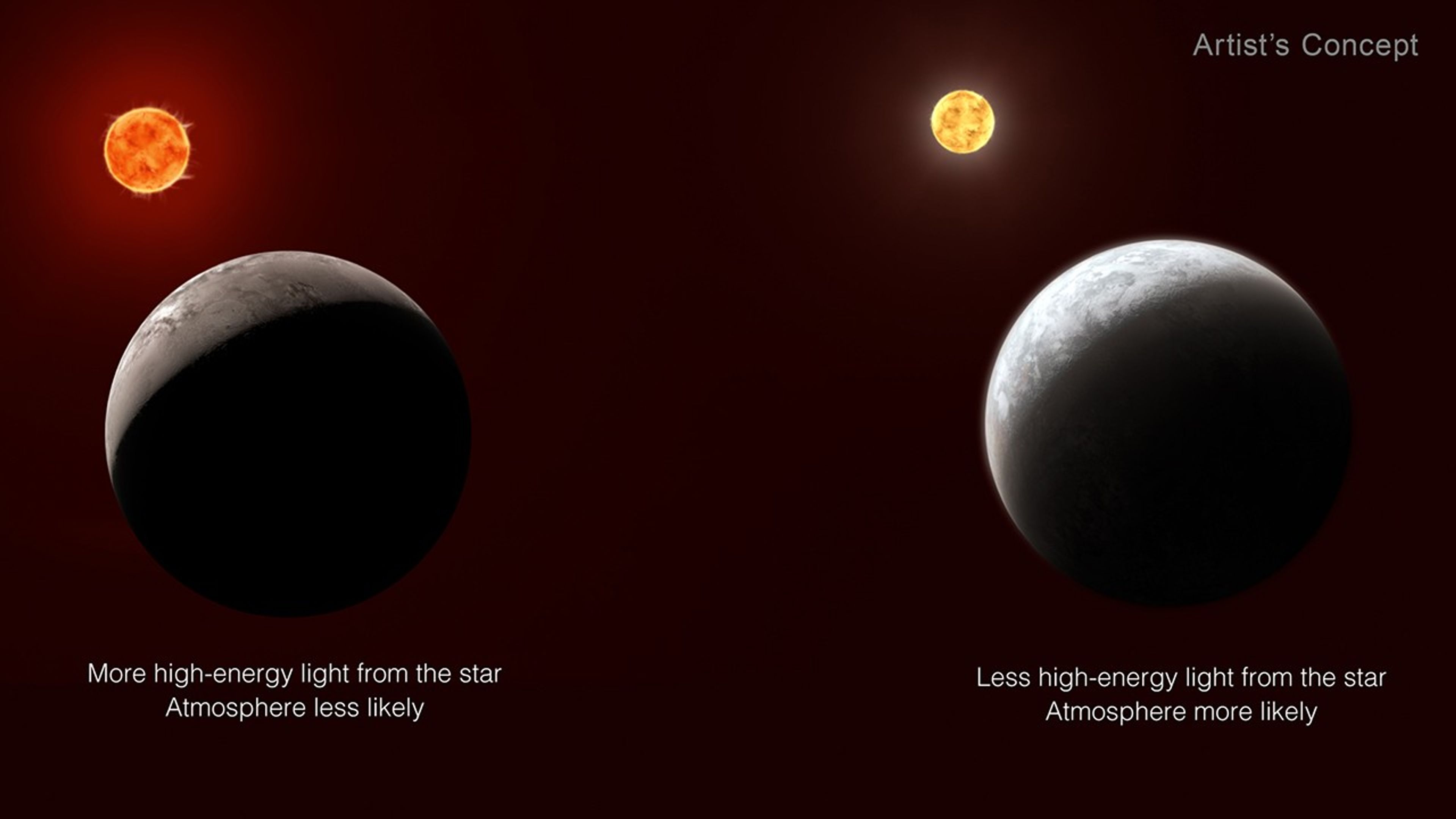1 min read
Which Planets Have an Atmosphere? Effect of Radiation

All other things being equal, the more high-energy light a planet receives from its star, the less likely it is to have an atmosphere. When starlight — particularly X-rays and ultraviolet light — reaches a planet, gas molecules in the atmosphere heat up and move very fast. If they absorb enough energy to move faster than the escape velocity of the planet, they can fly off into space. The more energy the planet receives from its star over time, the harder it is for the planet to hold on to its atmosphere. This is one reason why Mercury has only a trace atmosphere.
Share
Details
Last Updated
Sep 30, 2025
Contact
Media
Laura Betz
NASA’s Goddard Space Flight Center
Greenbelt, Maryland
laura.e.betz@nasa.gov




























